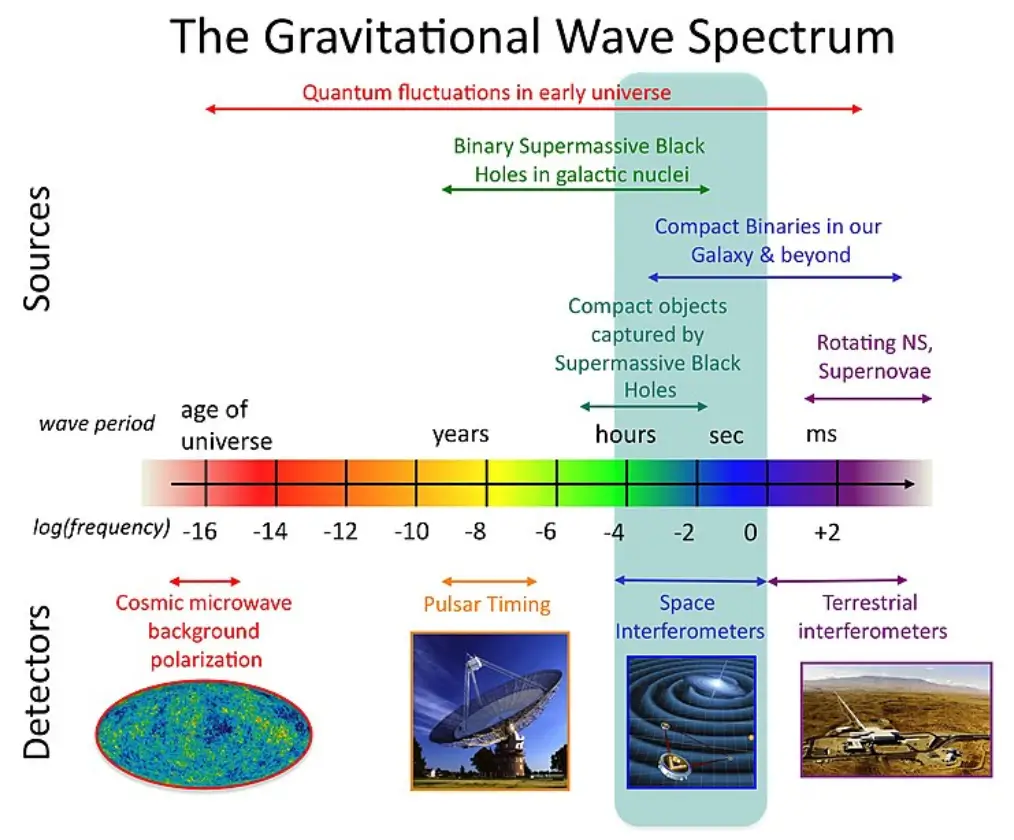Gravitational waves, a fundamental prediction of Einstein’s General Theory of Relativity, have sparked a revolution in our understanding of the universe since their first detection in 2015. These ripples in the fabric of spacetime carry information about some of the most violent and energetic events in the cosmos. In this article, we delve into the definition, types, and origins of gravitational waves, exploring the profound implications they have for astrophysics and cosmology.
Definition of Gravitational Waves:
Gravitational waves are disturbances in the curvature of spacetime that propagate as waves, traveling outward from their source at the speed of light. In Einstein’s theory, massive objects such as planets, stars, and black holes warp the fabric of spacetime around them, much like placing a heavy ball on a stretched rubber sheet. When these objects accelerate or experience asymmetric motion, they generate ripples in spacetime, analogous to the ripples produced by a stone thrown into a pond.
Types of Gravitational Waves:
Gravitational waves can be classified into several categories based on their sources and properties:
- Continuous Gravitational Waves: These waves are produced by symmetric, periodic motions of massive objects, such as rapidly spinning neutron stars. They have a continuous frequency and are emitted continuously over time.
- Burst Gravitational Waves: Burst waves result from sudden, transient events, such as the collision and merger of black holes or neutron stars. Unlike continuous waves, burst waves are brief, lasting only a fraction of a second.
- Stochastic Gravitational Waves: Stochastic waves arise from a random, background noise of gravitational radiation produced by the cumulative effect of numerous unresolved sources, such as the mergers of distant galaxies or primordial fluctuations in the early universe.
- Primordial Gravitational Waves: These waves are relics from the cosmic inflation that occurred in the earliest moments of the universe’s history. They are theorised to have left imprints on the cosmic microwave background radiation and carry valuable information about the universe’s early evolution.

Origins of Gravitational Waves:
Gravitational waves originate from a variety of astrophysical phenomena, each offering unique insights into the nature of the universe:
- Black Hole Mergers: One of the most dramatic events in the cosmos is the merger of two black holes. As these massive objects spiral inward and merge, they emit intense gravitational waves, sending ripples through spacetime that can be detected by sensitive instruments like LIGO (Laser Interferometer Gravitational-Wave Observatory) and Virgo.
- Neutron Star Collisions: When neutron stars, the dense remnants of massive stars, collide and merge, they produce powerful bursts of gravitational waves along with electromagnetic radiation, such as gamma-ray bursts and kilo-novae. The detection of such events, like the historic GW170817, provides valuable insights into the behaviour of matter under extreme conditions and the origin of heavy elements in the universe.
- Pulsars: Pulsars, rapidly rotating neutron stars, emit beams of electromagnetic radiation that sweep across space like cosmic lighthouses. As these pulsars rotate, they emit continuous gravitational waves, which can be detected through precise timing measurements of their radio pulses.
- Cosmic Microwave Background: The cosmic microwave background (CMB) radiation is the afterglow of the Big Bang, providing a snapshot of the universe when it was just 380,000 years old. Primordial gravitational waves generated during cosmic inflation leave unique signatures in the polarisation patterns of the CMB, offering a window into the universe’s earliest moments.
Conclusion:
Gravitational waves represent a new frontier in astrophysics, allowing scientists to observe the universe in an entirely new way. By detecting these elusive waves, researchers can probe some of the most extreme phenomena in the cosmos, from the violent collisions of black holes to the echoes of the Big Bang itself. As gravitational wave observatories continue to improve in sensitivity and precision, we can expect even more groundbreaking discoveries that will revolutionise our understanding of the universe.




